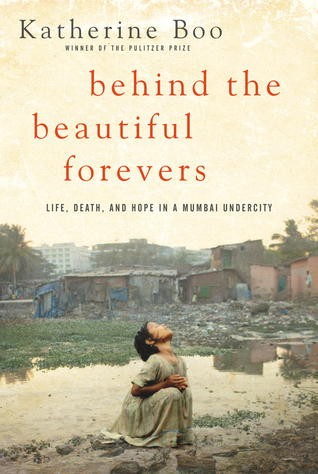Introduction
“Behind the Beautiful Forevers” by Katherine Boo is a compelling narrative that immerses readers in the lives of residents in the Annawadi slum of Mumbai, India. This non-fiction work reveals the complex interplay of ambition, societal inequities, and survival strategies in one of the world’s most densely populated urban areas. Boo’s investigative journalism and storytelling prowess paint a vivid portrait of life in the shadows of India’s economic boom.
Core Frameworks and Concepts
While “Behind the Beautiful Forevers” does not offer traditional business frameworks, it provides an implicit framework for understanding socio-economic dynamics, resilience, and human behavior under extreme conditions. These insights can be compared to frameworks found in books like “The Bottom Billion” by Paul Collier and “Poor Economics” by Abhijit Banerjee and Esther Duflo.
1. Understanding Socio-Economic Dynamics
Boo’s narrative serves as an illustrative case study of socio-economic dynamics where individuals navigate systemic barriers. The residents of Annawadi, much like the subjects in “Poor Economics,” demonstrate how micro-level decisions are influenced by macro-level economic conditions. This comparison highlights that poverty is not merely a lack of resources but also a lack of access to opportunities.
Example: Abdul, a teenage garbage sorter, exemplifies the resilience and resourcefulness found in impoverished communities. His story, akin to the narratives explored in “The Bottom Billion,” underscores how systemic corruption and lack of infrastructure perpetuate cycles of poverty.
2. Resilience in Adversity
The resilience demonstrated by Annawadi’s residents parallels the adaptive strategies discussed in Collier’s work. These strategies involve navigating bureaucratic obstacles and leveraging informal networks to survive and thrive.
Example: Asha Waghekar’s political maneuvering within the local council reflects the concept of “social capital” from “Poor Economics,” where personal networks are as valuable as financial assets in overcoming poverty.
3. Human Behavior Under Extreme Conditions
Boo’s depiction of day-to-day life in Annawadi provides a lens through which to examine human behavior in constrained environments. This aligns with the behavioral economics explored in Banerjee and Duflo’s research, demonstrating how scarcity impacts decision-making.
Example: The desperation driving Kalu’s thefts can be paralleled with the scarcity mindset theory, where immediate needs overshadow long-term planning.
4. The Role of Government and NGOs
Boo highlights the complex relationship between slum residents and governmental institutions, a theme explored in works like “Development as Freedom” by Amartya Sen. The narrative underscores the importance of effective governance and the role of non-governmental organizations in creating pathways out of poverty.
Example: The inefficiency and corruption within local government bodies in Annawadi resonate with Sen’s arguments for transparent governance as a catalyst for development.
5. Systemic Inequities and Inequality
The book provides a stark illustration of systemic inequities, offering a real-world context for understanding the structural challenges that perpetuate inequality, as discussed in “The Spirit Level” by Richard Wilkinson and Kate Pickett.
Example: The differential treatment of slum residents in accessing public services echoes Wilkinson and Pickett’s argument that inequality is a significant determinant of societal well-being.
Key Themes
1. Poverty and Economic Disparity
Boo’s exploration of economic disparity in Mumbai highlights the vast chasm between the city’s affluent and impoverished residents. The experiences of Annawadi’s inhabitants illustrate the daily grind of poverty and the systemic barriers that prevent social mobility.
2. Corruption and Power Dynamics
Corruption is a pervasive theme in “Behind the Beautiful Forevers,” affecting every aspect of life in Annawadi. Boo illustrates how power dynamics are manipulated by those in authority to exploit vulnerable populations, mirroring insights from “Corruption and Government: Causes, Consequences, and Reform” by Susan Rose-Ackerman.
3. Resilience and Survival
The resilience of Annawadi’s residents is a testament to human ingenuity and the will to survive. Boo provides numerous examples of individuals who, despite insurmountable odds, find ways to adapt and persevere, drawing parallels to the survival strategies discussed in “The Resilience Dividend” by Judith Rodin.
4. The Impact of Globalization
Globalization’s impact on local economies is another critical theme. While India’s economic growth is lauded globally, Boo illustrates how the benefits of globalization are unevenly distributed, leaving the poor behind. This is reminiscent of the themes explored in “Globalization and Its Discontents” by Joseph Stiglitz.
5. Aspiration and Ambition
Despite their circumstances, Annawadi’s residents harbor dreams and ambitions. Boo captures the aspirational spirit that drives individuals to seek better futures for themselves and their families, similar to the themes in “The Power of Hope” by Carol Graham.
Final Reflection
“Behind the Beautiful Forevers” transcends its setting, offering universal insights into human resilience, the socio-economic structures that perpetuate inequality, and the indomitable spirit of hope. While the book is a case study of a specific community, its themes resonate across domains such as leadership, design, and change management. Leaders can draw lessons from Asha’s political strategies, recognizing the importance of navigating complex power structures. In design, the adaptation strategies of Annawadi’s residents provide a blueprint for creating solutions that address real-world constraints. In change management, the book underscores the necessity of understanding the human element in any transformation process.
Ultimately, Boo’s narrative is a poignant reminder of the shared humanity that connects us all, urging professionals across fields to consider the broader societal impacts of their work and the potential for positive change.

